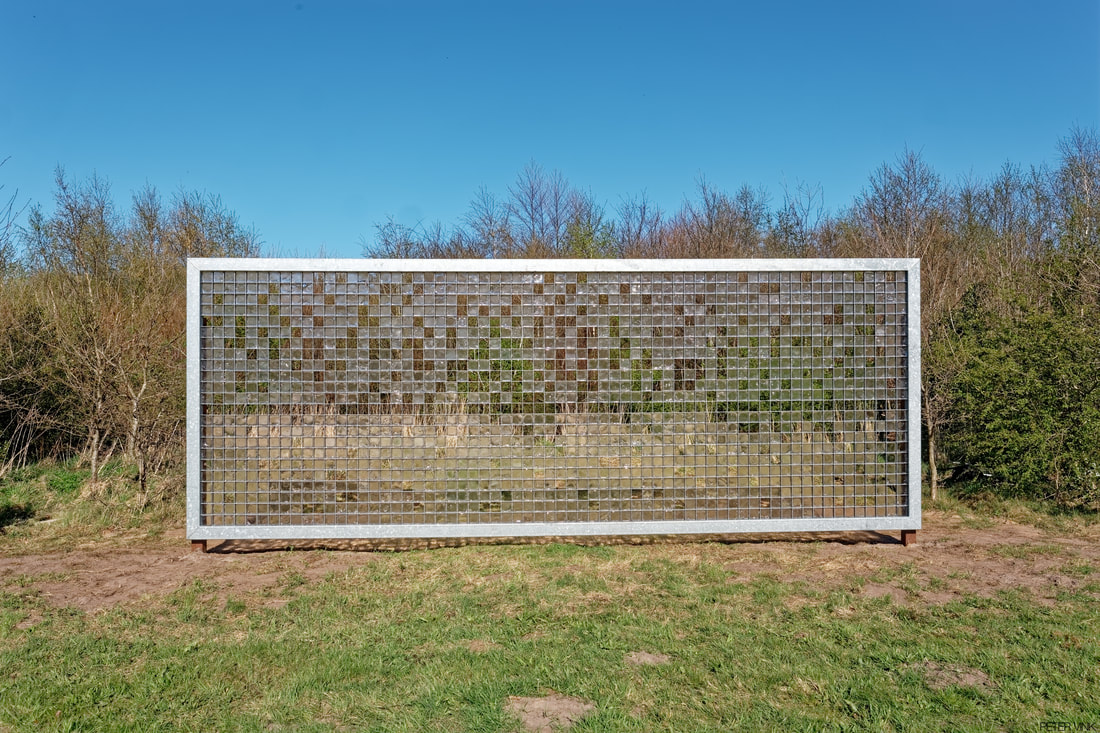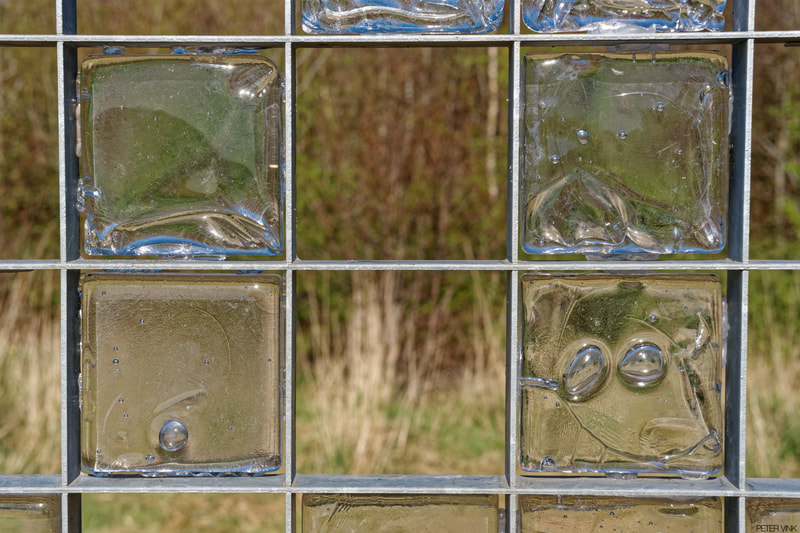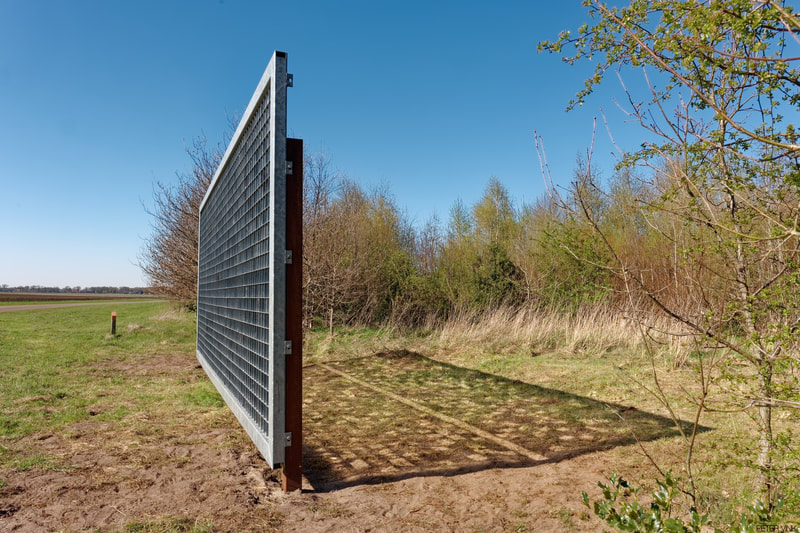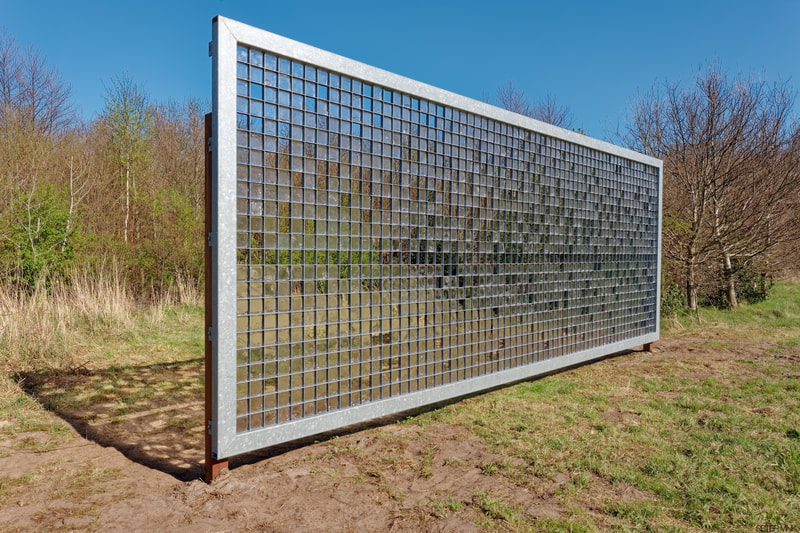1495
Artphy, buitengebied, Onstwedde, the Netherlands
galvanised steel grate, cast glass, glue. 6,75 x 0,30 x 3 m.
|
1495 is een sculptuur dat als een transparant panorama het landschap van Wessinghuizen aftast. Het metalen raster heeft 1495 mazen en hierin zijn circa 1100 met de hand gegoten glaasjes geplaatst. Deze glaasjes zijn daarom uniek in dikte, reliëf en transparantie.
De sculptuur was oorspronkelijk geplaatst aan het einde van de landtong bij de kunstinstelling DordtYart te Dordrecht en is nu verplaatst naar het buitengebied van Artphy en aangepast aan de nieuwe omgeving. Doordat elke maas een glasblokje heeft of juist niet, wordt het licht op een steeds andere manier gebroken en opstaan er, in elk kader, verschillende waarnemingen. Vanaf verschillende standpunten is blokje voor blokje de omgeving nagebootst aan de hand van de individuele eigenschappen van het glas. Als je bijvoorbeeld door het kunstwerk heen naar de akkers kijkt vanaf één specifiek standpunt, zie je dat er één rij in het raster is opengelaten, deze kan corresponderen met de weg die je er doorheen ziet en refereert tevens aan de horizontale eigenschappen van het landschap. De glazen blokjes zijn gegoten door middel van een glasoven die was geplaatst in de werkplaats van DordtYart, deze was speciaal neergezet voor de tentoonstelling “Glassfever” in 2016. Per dag waren er gemiddeld 60 glazen gegoten, die een dag later afgekoeld genoeg waren om in het rooster geplaatst te kunnen worden. In de sculptuur is dit proces van maanden werk zichtbaar. |
1495 is a sculpture that reflects the landscape of Wessinghuizen like a transparent panorama. The metal grid has 1495 meshes and in it, approximately 1100 hand-cast glasses have been placed. These glasses are therefore unique in thickness, relief and transparency.
The sculpture was originally placed at the end of the peninsula at the art institute DordtYart in Dordrecht and has now been moved to the outskirts of Artphy and adapted to the new surroundings. Because each mesh has a block of glass or not, the light is refracted in a different way each time and different perceptions arise in each frame. From different viewpoints, block by block, the environment is imitated on the basis of the individual properties of the glass. For example, if you look through the artwork at the fields from one specific point of view, you will see that one row in the grid has been left open, this can correspond to the road you see through it and also refers to the horizontal properties of the landscape. The glass cubes were cast by using a glass oven that was placed in the workshop of DordtYart, it was specially set up for the exhibition "Glassfever" in 2016. An average of 60 glasses were poured per day, which were cooled enough to be placed in the grid a day later. This process of months of work is visible in the sculpture. |













